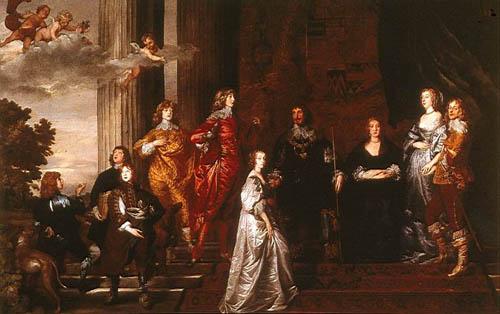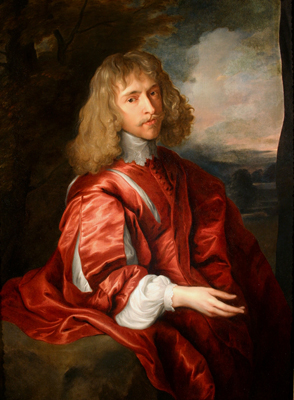Annotation:Lord of Carnavon's Jig (2): Difference between revisions
No edit summary |
No edit summary |
||
| (8 intermediate revisions by 2 users not shown) | |||
| Line 1: | Line 1: | ||
---------- | |||
---- | {{TuneAnnotation | ||
|f_tune_annotation_title= https://tunearch.org/wiki/Annotation:Lord_of_Carnavon's_Jig_(2) > | |||
'''LORD OF CARNARVAN'S JIG [2].''' English, Country Dance Tune (cut time). G Major. Standard tuning (fiddle). AA'BB'. "Lord of Carnarvan's Jegg," a spirited dance for four couples, appears in the first edition of John Playford's '''English Country Dancing Master''' (London, 1651), and in the | |f_annotation='''LORD OF CARNARVAN'S JIG [2].''' AKA - "Lord Carnavan's Jigg." English, Country Dance Tune (cut time). G Major. Standard tuning (fiddle). AA'BB'. "Lord of Carnarvan's Jegg," a spirited dance<ref>The word 'jig' does not refer to the 6/8 time tune, but rather the old convention of 'jig' as meaning a lively dance movement or fidgeting movement. The word, as ''gigue'', is still used in Quebec today to refer to duple or irregular meter tunes for dancing. </ref> for four couples, appears in the first edition of John Playford's '''English Country Dancing Master''' [http://www.izaak.unh.edu/nhltmd/indexes/dancingmaster/] (London, 1651), and in all subsequent editions through the 17th, of 1721 (then published by John Young). More than seventy years after Playford's original publication, John Walsh printed a set similar to Playford's in his '''Compleat Country Dancing-Master''' (London, 1731, No. 148). Samuel Bayard finds an earlier version of the melody in the Scottish '''Skene Manuscipt''' (c. 1615) as "Blew/[[Blue Ribbon Scottish Measure]]," and says a much later version is printed in Gow's '''Complete Repository''' (II, 1802, 4,5) under the title "[[Blue Ribbon Scottish Measure]]." Bayard thought the style of the air sounded Scottish. | ||
<br> | <br> | ||
<br> | <br> | ||
[[File:pembroke.jpg| | [[File:pembroke.jpg|500px|thumb|left|The Earl of Pembroke and His Family, by Anthony van Dyke]] | ||
Graham Christian (writing in CDSS News, issue #191, July/August 2006) explains that the title refers to Robert Dormer | Graham Christian (writing in CDSS News, issue #191, July/August 2006) explains that the title refers to Robert Dormer (1610-1643), 1st Earl of Carnavon, who married into the wealthy and influential family of the Earl of Pembroke. A lover of "the looser exercises of pleasure" (as the Earl of Clarendon wrote in his history of the Civil War), and of hunting, hawking and travel, Dormer proved an excellent soldier when he declared for King Charles, becoming an able and effective Royalist commander who won the respect of his contemporaries. He was with the King's forces at their success in the Battle of Newbury, where he acquitted himself admirably. However, after the battle, with the opposing forces disengaging and dissipating, Dormer had the misfortune to encounter a group of Parliamentary soldiers. He was recognized and dispatched with a sword. Christian notes that a likeness of Dormer was painted by Anthony van Dyck in his group portrait of the Pembroke family. [[File:carnavon.JPG|400px|thumb|right|Robert Dormer, 1st Earl of Carnarvon, by van Dyke, 1630's]] | ||
|f_source_for_notated_version= | |||
|f_printed_sources=Barlow ('''Complete Country Dance Tunes from Playford's Dancing Master'''), 1985; No. 55, p. 28. Barnes ('''English Country Dance Tunes, vol. 2'''), 2005; p. 78. | |||
|f_recorded_sources= | |||
|f_see_also_listing= | |||
}} | |||
------------- | |||
---- | |||
Latest revision as of 14:40, 27 September 2022
X:1 T:Lord of Carnarvan's Jegg [2] M:C| L:1/8 S:John Playford - English Country Dancing Master, 1st edition (London, 1651) K:G B2G2 Bc d2|c2A2 ABcd|B2G2 d2 ef|1 g4 d4:|2 g4 d2 ef|| |:gfed g3B|A2A2 c2 dc|B2G2b2a2|1 g4 d2 ef:|2 g4 d4||
LORD OF CARNARVAN'S JIG [2]. AKA - "Lord Carnavan's Jigg." English, Country Dance Tune (cut time). G Major. Standard tuning (fiddle). AA'BB'. "Lord of Carnarvan's Jegg," a spirited dance[1] for four couples, appears in the first edition of John Playford's English Country Dancing Master [1] (London, 1651), and in all subsequent editions through the 17th, of 1721 (then published by John Young). More than seventy years after Playford's original publication, John Walsh printed a set similar to Playford's in his Compleat Country Dancing-Master (London, 1731, No. 148). Samuel Bayard finds an earlier version of the melody in the Scottish Skene Manuscipt (c. 1615) as "Blew/Blue Ribbon Scottish Measure," and says a much later version is printed in Gow's Complete Repository (II, 1802, 4,5) under the title "Blue Ribbon Scottish Measure." Bayard thought the style of the air sounded Scottish.


- ↑ The word 'jig' does not refer to the 6/8 time tune, but rather the old convention of 'jig' as meaning a lively dance movement or fidgeting movement. The word, as gigue, is still used in Quebec today to refer to duple or irregular meter tunes for dancing.

